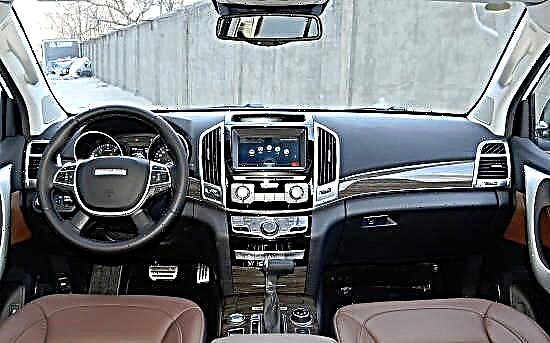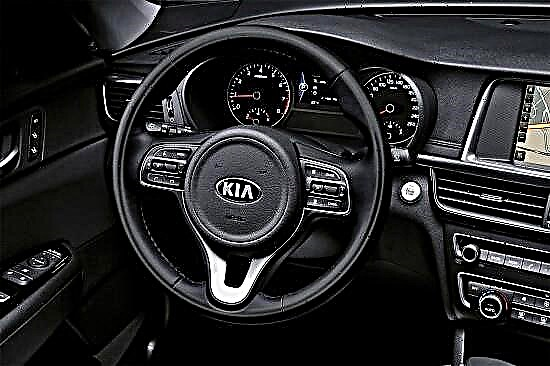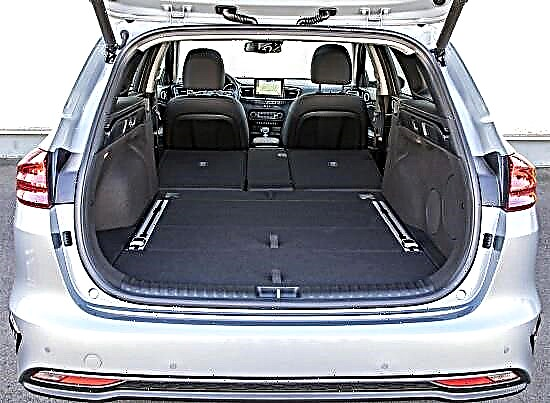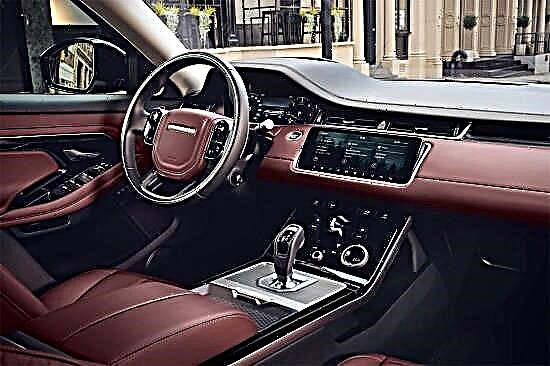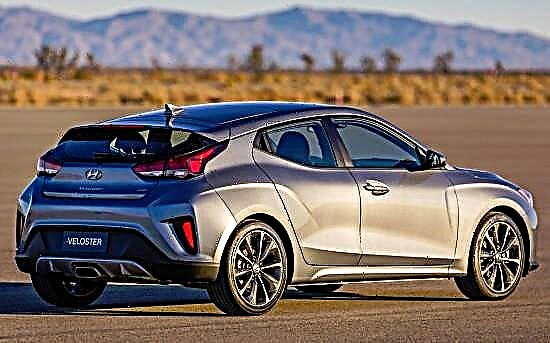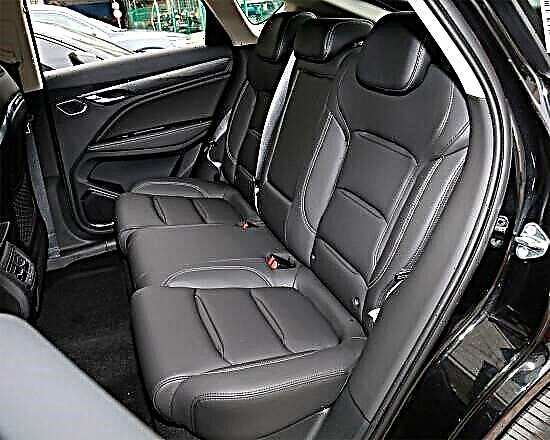Recently, DVRs have become indispensable assistants for motorists and allow them to deal with various controversial situations that may arise on the road, and more recently they have become one of the most key attributes in the independent registration of an accident according to the European protocol. No less important assistance to drivers is provided by radar detectors, which are constantly being improved taking into account the opinions of consumers for more accurate detection of mobile and stationary photo and video recording complexes.
Modern gadgets have fully combined the functions of two devices at once (video recorder and radar detector (which many people mistakenly call “antiradar”), which are controlled by means of a color LCD display through a single menu. And such equipment is gradually gaining popularity, as a result of which it was decided to test seven similar models from various manufacturers (and four of them were created using new technology).

Seven DVRs with radar detectors, differing in price and concept, came together in the tests to compare their performance, and also to determine how expensive devices are better than cheap ones (if not at all). The "twins" were also noted in the tests - the first pair were Sho-Me Combo 3 A7 and Playme P400 Tetra, which have an original design and a classic structure of a detector with a horizontal horn antenna.
The representatives of the “new school” were the Inspector Cayman and SilverStone F1 Hybrid Uno “gadgets”, which visually resemble “soap dish cameras” and boast a small size and a so-called flat horn. Such a trick does not harm the quality of the reception of radar radiation, but at the same time has a positive effect on the dimensions.
Video recorders Inspector Scat and Sho-Me Combo Slim (like previous models) have a flat horn, but outwardly cause more positive emotions, and there are objective reasons for this - their recording quality is Super HD (2034 × 1296 pixels), and the screen "flaunts" touch control. But for such "bells and whistles" you have to pay more.
In addition, Sho-Me Combo 1, which became the only one among the participants with an iCatch V33 processor (the rest are equipped with Ambarella A7), acted as a “reference version”.
It is worth noting that current "gadgets" are becoming more functional from year to year: now, to get previously unavailable opportunities, it is not necessary to buy a new device, but simply update the firmware from the manufacturer's website. For example, quite recently, many devices could not automatically change the "track" and "city" modes, while at present this skill has become a familiar part of combo devices and radar detectors.
Well, the most recent "trick", which is present in the presence of all subjects, is the disabling of the speed stamp on the record. The menu sets the threshold speed value in kilometers per hour, exceeding which entails disabling this parameter during the next video viewing. Someone will say that this is just a way to release yourself from liability for exceeding the speed limit, but do not forget - everyone has the right not to testify against themselves.
SilverStone models provide the ability to set the warning range of stationary cameras from memory separately for cities and separately for tracks, which is very convenient. While the Inspector devices can boast of the presence of the function of disabling warnings about certain types of radars (for example, Avtodoria, Strelka, etc.). But here the question arises - what is the semantic load in this? Unclear.
Well, it's time to move from theory to practice, and the first exercise that all "gadgets" underwent was a test on the knowledge of stationary cameras, carried out along a strictly defined route. It is worth noting that not every device is capable of detecting all the "traps", but here the situation is more than interesting - all the test subjects "missed" twice by 33 points, and in the same places. They didn’t notice the iron boxes on the side of the road used to briefly install Chris’s radars. We can only assume that the creators of the base classified such "guardians of the law" as mobile ambushes, and therefore decided not to notify motorists about those places that present danger for only a few hours, and the rest of the time are empty. But the cameras appear there all the time and do not change their location, so a warning about them will be useful.
But as regards the efficiency of the appearance of new points in the database, there are no complaints - at the time of testing, each of the combined devices knew about all the “Strelka” based on the route of movement. However, there is one but: fresh ambushes become available only after the first update. The test participants responded in a timely manner to the Avtodoria complexes, which measure the average speed on the road between several cameras - they indicate both the start and end points of such sections, and when driving along them, they calculate the average speed and display numbers on the screen.
Still, there were some winners in this discipline - only SilverStone and Inspector notify about cameras that “shoot” in the back. The rest of the test subjects take into account this method of installation only in one case out of six, and this can only be called an exception. But the “sight” on the rear license plate is gaining more and more popularity, and in the near future it will probably become dominant on Russian roads.
All seven test participants distinguished themselves by the minimum number of false positives, except that only Inspector Scat turned out to be a little more "noisy" than the others (but after all, ordinary radar detectors are usually even more "talkative"). But it's worth noting right away that the sensitivity of the combo devices is in full order.
The “shooters” recognized all the devices without any problems, and even on terrain with difficult terrain, they “talked” about the danger before entering the line of sight, and even notified with a special type of alarm. With cameras that "shoot" in the back, such "gadgets" did not cope in the best way - they warned of a threat from 100-150 meters away (but this distance is enough to reduce the speed).
Often, "Strelki" hide behind road screens and signs located on the frames above the track, which is why such radars can be seen only in the rear-view mirror. Therefore, in the event of a radar detector triggered, you must believe it, and not your eyes.
And how will the subjects behave against the police radars Iskra, Lux, Binar, Vizir and Amata in a desert area that is devoid of any interference? The improvised "traffic cop" was in a small lowland behind a smooth turn, which is why he began to see a potential "Schumacher" at a distance of about half a kilometer.
Almost all devices “burned out” the spark, which strongly radiated in the K-band, even before entering direct fire, with the exception of Playme - it “squeaked” only at the very border. With the Vizier, also operating at similar frequencies, the balance of power has not changed, and the same Playme has shown itself in the worst way.
To make life as difficult as possible for the subjects, the Binar radar (K-band) was directed to their backs so that the "gadgets" could not pick up the signal reflected from the asphalt. The best results in such a situation were noted by SilverStone F1, which noticed a threat at a distance of 600 meters (this is quite enough to slow down), and Inspector Scat and Sho-Me Combo 1 performed a little worse - 500 and 450 meters, respectively. Other participants did not perform as well, but still did not lose face.
But with the Amata laser complex (the most formidable of their chosen radar), many subjects had problems - it "flaunts" a narrow beam, which is difficult for detectors to catch, especially if the inspector directed it almost parallel to the ground and to the lower part of the body.Playme, Sho-Me Combo 3 A7 and Sho-Me Combo 1 could not recognize the "ambush", and Sho-Me Combo Slim and Inspector Scat worked late - over 150 and less than 100 meters, respectively (the speed is already fixed, therefore braking is meaningless) ... The clear leaders were SilverStone F1 and Inspector Cayman, which alerted the driver of an approaching threat 550 meters away (in the radar part of the tests, these devices showed generally the best results).
What about video-capable combo devices? Sho-Me Combo 1 and 3 A7, SilverStone F1 Hybrid Uno, Inspector Cayman and Playme P400 Tetra record at 1920 x 1080 pixels - each with decent Full HD quality. At night, the picture of all models is noticeably yellow, with the exception of Sho-Me 3 A7, which has a "white" image. Although, this nuance does not affect the overall clarity. Playme and SilverStone recorders display images with fewer ghosting around roadside lights, which contributes to the final quality of the recording.
The Inspector Scat and Sho-Me Combo Slim models boast Super HD video recording, but this does not give them a serious advantage over their opponents with Full HD. For example, in the first case, during the day, the numbers in front of the driving car are read from a distance of 13-15 meters, and in the second - 10-12 meters. Of course, if the car moves at a significantly higher speed when overtaking, then here Super HD has the best chances of recognizing license plates, but still it does not provide a 100% guarantee.
In nighttime exercises, the Inspector Scat turned out to be ahead of the rest, while the Sho-Me with Super HD showed not so good results due to noticeable halos around the street lamps.
Two models (Inspector Scat and Sho-Me Combo 3 A7) showed serious problems with battery life - they simply did not start from the battery. The rest of the subjects showed good autonomy - all lasted about half an hour, which is quite enough to capture the complete picture from the accident scene outside the car.
In the aggregate of all tests, the best results were recorded in the SilverStone F1 Hybrid Uno combo device, which has proven itself as a radar detector due to its excellent recognition of cameras "hitting" in the back. In terms of Full HD shooting resolution, it is not much inferior to devices with the Super HD standard, but in terms of cost it beats Sho-Me Combo Slim, which writes “super” video. And the difference between Silverstone and Inspector Scat is generally significant - 6100 rubles at once.
The final rating of DVRs with radar detectors:
1. SilverStone F1 Hybrid Uno;
2. Inspector Cayman;
3-4. Inspector Scat;
3-4. Sho-Me Combo Slim;
5. Sho-Me Combo 1;
6-7. Playme P400 Tetra;
6-7. Sho-Me Combo 3 A7.
The Inspector Cayman model also sees "ambushes" that fix the rear license plate, but in terms of the viewing angle and radar part, it lost to the leader. In addition to this, it also costs a lot more.
Sho-Me Combo 1 performed well, although in the final rating it gave way to Inspector Scat and Sho-Me Combo Slim. This "gadget" did not fail in any of the disciplines, but it did not become the best anywhere, but it distinguished itself by an affordable price tag and a convenient format.
As for devices that shoot according to Super HD standards, the Sho-Me Combo Slim took a higher position: despite the fact that it was slightly inferior to the Inspector in recording quality, it worked without glitches and was more preferable in terms of cost. However, both of these models are not recommended for selection for the following reason: a huge screen (and even strongly illuminated during the day) negates all the advantages of a flat horn, because because of this, both "gadgets" are comparable in size to a navigator. In addition, the touchscreen display interferes with visibility, attracts the attention of dishonest people and increases the total cost. The touchscreen in the recorder and radar detector is not an important element, because the settings in them are usually set once and for a long time.
The outsiders turned out to be Sho-Me Combo 3 A7 and Playme P400 Tetra, which did not show good results in radar tests either, and could not please with the high quality of shooting (although in general the videos are recorded quite decent). They also had other shortcomings: the first had a lot of "glitches", did not work on battery power and was noted for poor build quality, and the second functioned flawlessly, but frightened off by its high cost.

